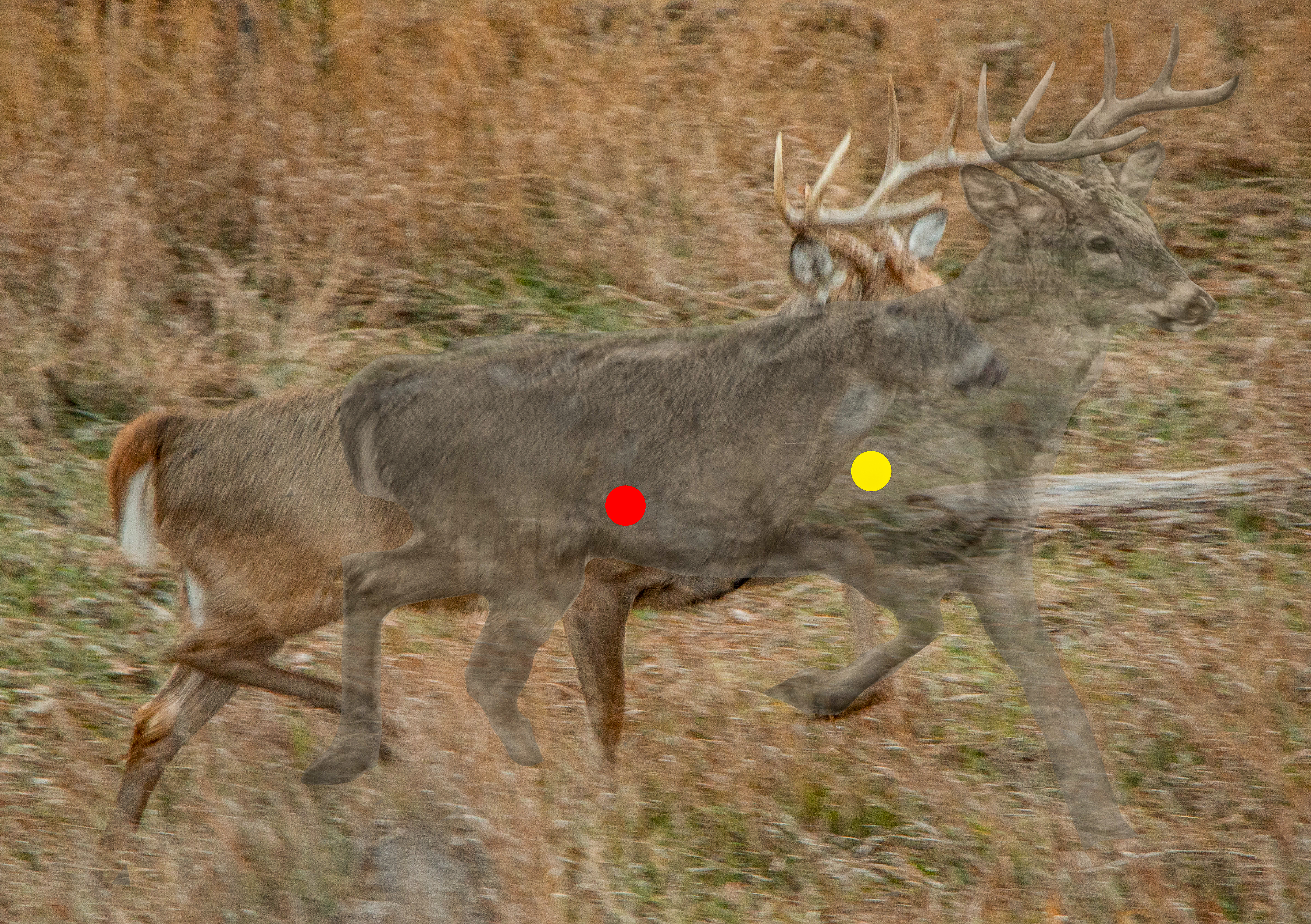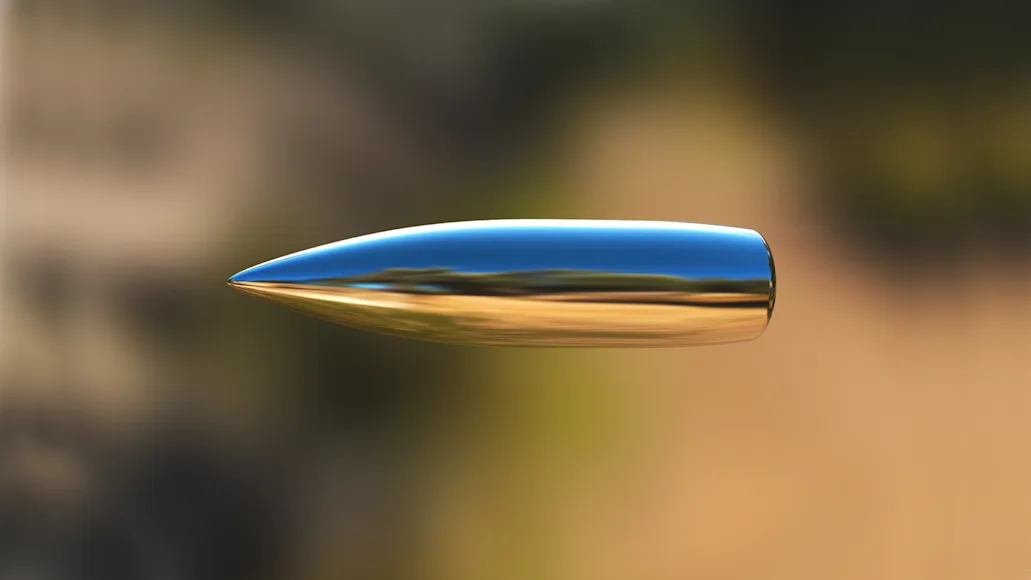Hunters and shooters are accustomed to talking about bullet speed in terms of feet per second. As a result, it may seem logical to assume that a bullet with a muzzle velocity of 3000 fps actually travels 3000 feet in one click of the second hand. The only problem is, it doesn't. Why? Because bullet speed is not constant. From the moment a bullet leaves the muzzle, it's slowing down.
By the same token, when we compare cartridges and loads, we generally consider the one with the faster muzzle velocity to be the fastest to the target. But unless the bullets are identical, it's not always the case. For hunters especially, whose targets don't always stay perfectly still, the more appropriate measurement of bullet speed is time of flight, which describes how long it takes a bullet to travel a certain distance. These might seem like the same thing, but they're not, so let me explain.
Why Bullet Time of Flight Is Important
If a 150-grain bullet with a ballistic coefficient of 0.314 leaves the muzzle of a 30-06 at 2910 fps, it will take 0.59 of a second for it to travel 440 yards. If a 150-grain bullet from a 270 Winchester with a ballistic coefficient of 0.625 leaves the muzzle at 2850 fps (60 feet per second slower), it will reach 440 yards in 0.52 of a second. Based on muzzle velocity alone, the 30-06 load is faster, but the bullet fired from the 270 arrives on target sooner. This is like what you often see in drag racing where one car takes an early lead but the other reaches the quarter-mile mark sooner.

Muzzle velocity is important, but you also need to know how long it takes your bullet to get to your target. Because you measure almost everything you do by the time it takes to complete the task, you should know this already. When you're planning to take a flight across the country, you don't ask how fast the plane is; you ask how long it will take to get where you’re going. Hunters should take time of flight more seriously.
Trajectory and Wind Drift
A bullet’s launch speed, combined with its ballistic coefficient, determines its time of flight to various distances. In turn, knowing that time of flight helps you to calculate trajectory and wind drift. Why? Because it’s the amount of time that gravity and wind have to influence the bullet that makes the difference. Time of flight is the reason bullets with a high ballistic coefficient—and rifles and cartridges capable of stabilizing them—have become so popular. Fast muzzle velocities are great, but at greater distances, a higher-ballistic-coefficient bullet can have the advantage. This is true for all shooters. But it can be especially important for hunters because shooting in the field is not just about managing trajectory and wind drift; time of flight impacts your shot in other ways because animals move.
Distance and Time
This is especially critical a longer distances but can come into play on closer shots, too, and here’s a good example of why. A deer walks at about 3 mph. If a deer starts walking at the same moment you press your rifle’s trigger, it will move forward about 2 feet in a half-second. If the deer is 440 yards away and it takes your bullet a half-second to get there, it will strike about 2 feet behind your point of aim. At best, you’ll gut shoot your deer. And if you're thinking, So what, I don't shoot our to 440 yards, consider that at even half that distance (220 yards), that same bullet would strike about a foot off mark.

If you’re an experienced hunter, you can probably make a reasonable guess about when a deer might start walking, but it’s not just walking that matters. A deer can rotate or move its body in a half-second. Or another deer could step in front of or behind the deer you’re shooting at. A half-second seems like an instant, but a lot of things can happen in an instant.
Time of flight becomes even more critical for extremely long shots. For example, many consider the 6.5 Creedmoor a long-range wonder cartridge, but it takes a 6.5 Creedmoor bullet about 1 ¼ seconds to travel 880 yards. In that amount of time, a deer can walk or move about 6 feet. At that distance, it takes a bullet from the even more wondrous 7mm PRC more than a full second to get there. Again, plenty of time for animal to move. Also, while gravity is a constant and easy to compensate for, unpredictable wind gusts and directional changes can instantly occur over a half mile and a full second and can move a bullet off course substantially.
Even those of us who do not shoot at extreme range and hunt with slow velocity cartridges like the 30-30 Winchester or the 45-70 Government cannot ignore time of flight. It takes about ¼ second for a 170-grain 30-30 Winchester bullet to travel 160 yards, and it take a 300-grain 45-70 bullet even longer to go that distance. If a deer steps forward while you’re pulling your trigger, it will move about a foot in that amount of time. This might explain some of the bad hits you’ve made on animals over the years.
Time of Flight Takeaways

There are two main takeaways from all of this. The first is that when you’re comparing cartridges and loads, don’t focus on muzzle velocity alone. Look at the time of flight to various distances to determine which cartridge/load is truly the fastest. The other takeaway is to seriously consider the totality of the situation regarding potential animal movement before you shoot. Most hunters would not assume a deer taking a single step at 300 yards would matter all that much. It does.
High-velocity cartridges and high-ballistic-coefficient bullets can be very helpful, but don’t let either lure you into a false sense of ability or performance. As a hunter, you want to know how long it will take you to get ready in the morning and to get on stand, but you also need to know how long it will take your bullet to get from your rifle to your target. This will help you make the best decision about whether you should take the shot or not. Fortunately, time of flight is not a secret, most good ballistic programs provide that information. Don’t ignore it.


